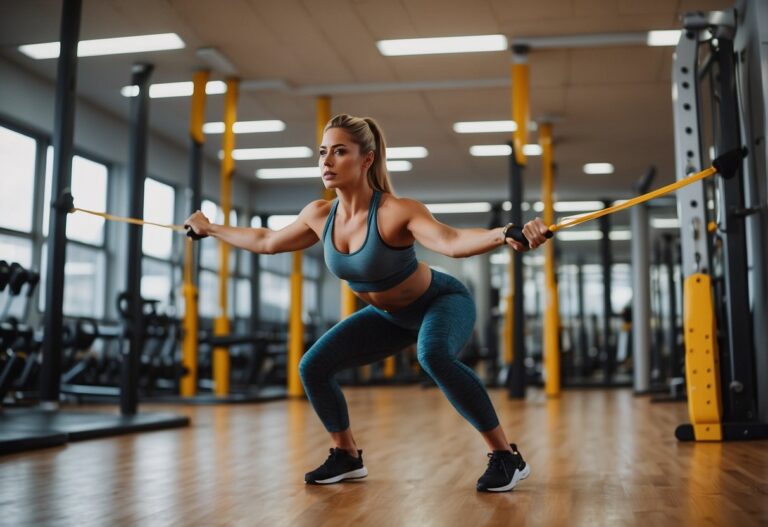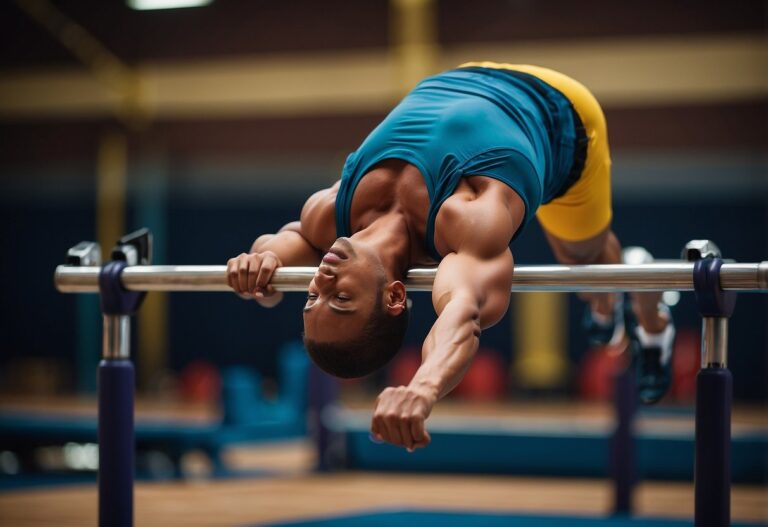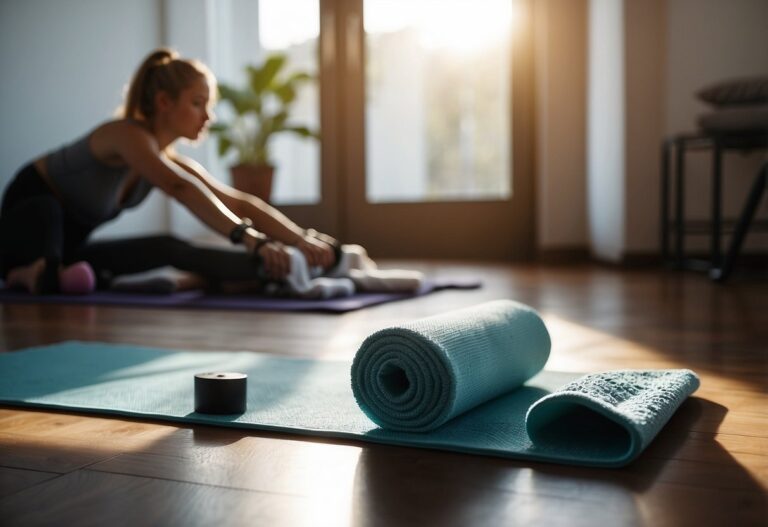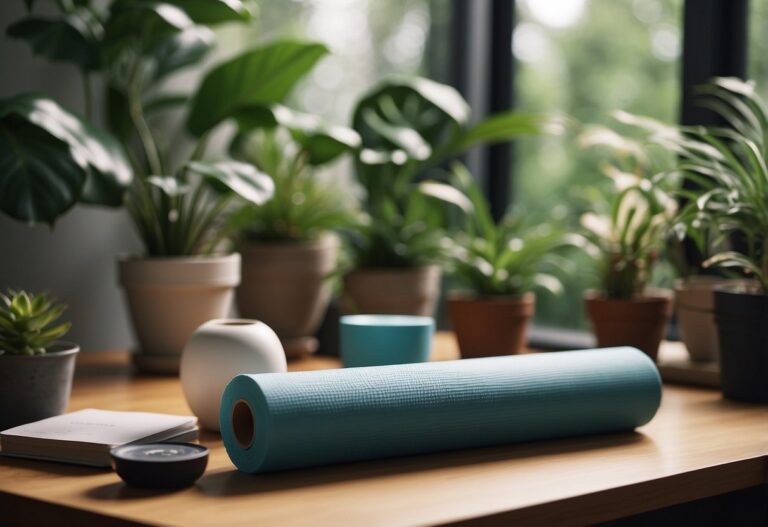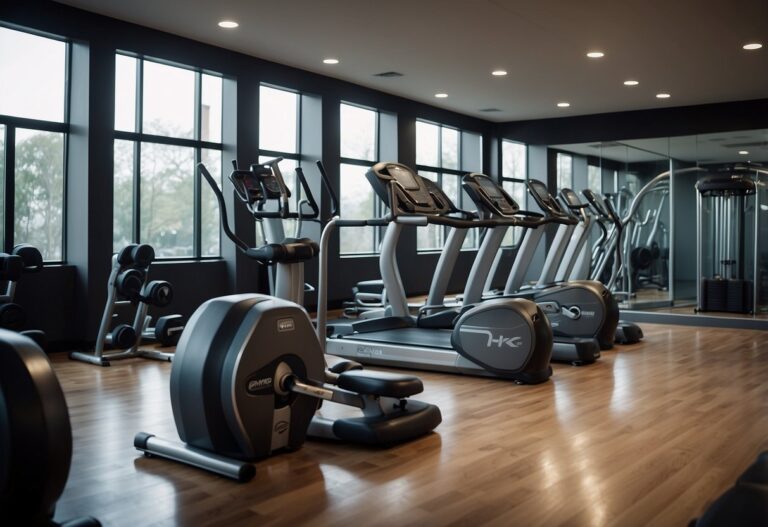Are you looking to tone your biceps and achieve stronger, more defined arms? You’re in the right place. Bicep workouts are essential not just for aesthetics but also for improving the overall strength and functionality of your arms. Regular exercise can help you achieve those toned biceps you’ve always wanted.

What’s the best way to get started on your bicep toning journey? In this article, you’ll find useful tips and techniques to help you make the most out of your bicep workouts. Whether you’re exercising at home or hitting the gym, these tips will guide you towards more effective and efficient workouts.
Concentration Curls
Concentration curls are a fantastic way to isolate your biceps and build size effectively.
To perform them, sit on a bench and hold a dumbbell in one hand. Rest your elbow on the inside of your thigh, near the knee.
This position helps you focus on the bicep muscle. As you curl the weight, keep your body still and really squeeze at the top.
Perform 3 sets of 8 to 12 reps per arm. This exercise is great for those looking to enhance their bicep definition. Learn more about technique and benefits.
Make sure to switch arms after completing each set to maintain balance in muscle development.
Hammer Curls
Hammer curls are a fantastic way to strengthen your biceps and forearms. To get started, stand with your feet shoulder-width apart and hold a pair of dumbbells with your palms facing each other.
Keep your elbows close to your body and lift the dumbbells towards your shoulders. Remember to move smoothly and control the weights to focus on your muscles.
There are different variations you can try, such as crossbody hammer curls and incline hammer curls. These can add some diversity to your workout and target the muscles from different angles.
Don’t forget to engage your core throughout the exercise to keep your torso stable. This small adjustment makes a big difference in your form and results.
Zottman Curls
Zottman curls are a great exercise for toning your biceps and forearms. They combine the best of traditional biceps curls and reverse curls. This makes them effective for working out multiple muscle groups at once.
To do Zottman curls, start with a pair of dumbbells. Perform a regular bicep curl, but once you reach the top, rotate your wrists so your palms face down. Lower the weights slowly.
Don’t worry if you find them challenging at first. You can start with lighter weights and fewer reps. As you get stronger, increase the weight or add more sets.
For a different approach, try seated Zottman curls. Using an adjustable bench can help take stress off your lower back. This makes it easier to focus on your form.
If you want to mix things up, consider adding tempo training. Hold the top position for a few seconds before lowering the weights. This adds intensity to your workout.
Including Zottman curls in your routine can help you achieve well-rounded arm strength. Wondering where to start? Aim for 3-4 sets of 8-12 reps.
Learn more about the benefits and how to perform Zottman curls correctly.
Incline Dumbbell Curls
If you want to tone your biceps, incline dumbbell curls are a fantastic exercise to try.
Start by setting an incline bench to about 55-65 degrees. Sit back with your spine flat against the pad and hold a dumbbell in each hand with your palms facing up.
As you curl the weights, breathe in deeply and keep your elbows slightly behind your torso. This helps target the biceps effectively. Check out this guide for a detailed step-by-step.
Be careful not to swing the weights. Focus on maintaining control throughout the movement. Proper form is crucial to prevent injuries and maximise benefits.
Chin-Ups
Chin-ups are a fantastic exercise for toning your biceps and other upper body muscles. When done correctly, they not only strengthen your arms but also engage your back, shoulders, and even abs.
To start, find a sturdy bar you can grip. Use an underhand grip with hands shoulder-width apart. Pull your chest to the bar, then lower yourself slowly.
If you’re new, try eccentric chin-ups. Jump up to the bar and lower yourself as slowly as possible. This helps build strength for a full chin-up.
Remember, consistency is key. Practising regularly will help you improve over time.
Cable Curls
Cable curls are a fantastic way to tone your biceps and add variety to your workout. This exercise uses a cable machine, which keeps constant tension on your muscles, leading to better muscle activation.
To start, stand upright near the cable machine with your feet shoulder-width apart. Grab the bar with an underhand grip, standing up straight with your chest lifted and core braced.
Bend your elbows and curl the bar up towards your shoulders. Keep your elbows close to your body and avoid swinging your arms. Hold for a second at the top, then lower slowly to maintain tension on your biceps.
Make sure you breathe out while curling up and inhale on the way down. This routine not only works your biceps effectively but also helps improve your form and stability. For more detailed instructions, check out Verywell Fit.
Consistency and proper form are key to seeing results from cable curls. Try incorporating them into your regular workout routine to build strong, toned biceps.
Preacher Curls
Preacher curls are a great way to build strong and defined biceps. This exercise isolates your biceps, helping you to target the muscle more effectively.
To perform preacher curls, you’ll use a preacher bench. Sit down and place your arms on the padded surface. Keep your upper arms still and curl the weight towards your shoulders, then slowly lower it back down.
You can use different equipment for preacher curls like a barbell, EZ bar, or dumbbells. Each one provides a slightly different feel and can help keep your workouts interesting.
Tip: Avoid using too much weight. Focus on proper form to get the best results and prevent injuries. Aim for controlled movements and a consistent pace.
Include preacher curls in your workout routine 1-2 times per week for optimal bicep growth. Mixing in this exercise can help you build those peaks on your biceps and achieve that toned look you’re aiming for.
For more detailed information on how to do preacher curls, check out this extensive guide.
Drag Curls
Drag curls are an excellent exercise for targeting your biceps.
In this move, you drag the barbell up your torso. This keeps the focus on your biceps and reduces the use of your front deltoids. Doing this can lead to better muscle growth in your biceps.
There are different variations of drag curls. For example, you can try the dumbbell drag curl, which allows each arm to work independently. This helps fix muscle imbalances.
You can also try the cable drag curl, which keeps constant tension on your biceps. This constant tension can aid in muscle growth.
Spider Curls
Spider curls are excellent for isolating your biceps. Set an incline bench at a 45-degree angle and sit down.
Place your chest on the back pad and let your arms hang down. Using dumbbells, curl the weights slowly towards your shoulders. Make sure your upper arms stay stationary.
Feel the burn as you squeeze your biceps at the top of the movement. Remember, control is key to maximising the benefits. For more detailed guidance, check out this Spider Curl guide.
EZ Bar Curls
EZ bar curls are a fantastic way to tone your biceps. This exercise specifically targets the biceps brachii, which helps in building strength and size.
To start, grab an EZ curl bar with an underhand grip. Your hands should align with your shoulders. Stand with your feet shoulder-width apart and knees slightly bent.
As you curl the bar up to your chest, make sure to squeeze your biceps. Hold the position briefly and then slowly lower the bar back to the starting point. Aim for 4 sets of 12-15 repetitions for the best results.
You can vary your grip to target different parts of the bicep. For instance, using the inside grip works the long head, while the outside grip emphasises the short head.
For more detailed instructions, visit this EZ Curl Bar link. Adding this exercise to your routine can help you achieve those toned biceps you’re aiming for.
Understanding Muscle Anatomy
To get the best results from your bicep workouts, it’s crucial to understand how these muscles work and what other muscles support them during exercise.
Primary Functions of the Biceps
The biceps are located at the front of your upper arm. They consist of two main parts, or heads: the short head and the long head.
The short head is on the inner part of your arm, while the long head is on the outer part. These muscles are responsible for bending your elbow, which is called flexion, and turning your forearm, known as supination.
When you perform exercises like bicep curls, you are engaging these parts of the bicep to lift the weight. It’s this contraction that helps to build strength and definition in your arms.
Having a clear idea of how your biceps function allows you to choose exercises that target each part effectively. For instance, the long head can be more engaged in exercises where your arm is behind your body, like incline dumbbell curls.
Synergistic Muscles in Arm Workouts
While the biceps are the star of most arm workouts, they don’t work alone. Several other muscles, known as synergistic muscles, assist during bicep exercises.
The brachialis is a muscle that sits underneath your biceps. It helps with elbow flexion, especially in movements where your palms face your torso, like hammer curls.
Another important muscle is the brachioradialis, located in your forearm. This muscle is also involved in elbow flexion and helps stabilise your arm during exercises.
When performing arm workouts, it’s essential to engage these supporting muscles to prevent overworking your biceps and to promote balanced muscle development. Exercises like reverse curls can help target these synergistic muscles, ensuring a well-rounded arm workout.
By understanding how these muscles work together, you can improve your workout routine and achieve better results.
Effective Techniques for Bicep Toning
Focusing on proper form, progressive overload, and isolation exercises can significantly improve your bicep toning efforts. Each aspect plays a crucial role in achieving well-defined and stronger biceps.
Proper Form and Posture
Maintaining good form and posture is essential when working on your biceps. Poor technique can lead to injuries and less effective workouts. Stand straight with your shoulders back, keeping your core tight to provide stability. When doing a curl, make sure to keep your elbows close to your body and avoid swaying.
For example, while doing bicep curls, focus on slow, controlled movements instead of using momentum. This ensures that your biceps are doing the work rather than other muscles. Using lightweight dumbbells at the beginning can help you master the form before moving on to heavier weights. Remember, precision and control are more important than speed.
Utilising Progressive Overload
Progressive overload involves gradually increasing the weight or the number of repetitions in your workout to continuously challenge your muscles. This principle helps in building strength and muscle tone over time. Start with a weight that you can manage comfortably and then increase it progressively.
For instance, if you start curling with 5 kg weights, aim to increase this to 6 kg after a few weeks. Alternatively, if using the same weight, increase the number of reps or sets. Tracking your progress in a workout journal can help you stay motivated and ensure you are challenging yourself appropriately.
Incorporating Isolation Exercises
Isolation exercises specifically target the biceps, enhancing muscle tone and definition. These exercises allow you to focus on one muscle group at a time. Bicep curls using dumbbells or barbells are classic examples. Additionally, exercises like concentration curls, where you use one arm at a time, can deeply engage your biceps.
Another effective isolation exercise is the preacher curl, performed on a preacher bench. This setup helps eliminate momentum, ensuring that your biceps are doing all the work. You can also incorporate exercises like chin-ups, which not only target the biceps but also improve grip strength and engage your back muscles.
Adopting these techniques in your workout routine will make your bicep toning efforts more effective and rewarding.
Nutritional Tips for Muscle Growth

To grow your biceps effectively, pay attention to your diet. Protein and hydration are key factors influencing muscle repair and performance. Let’s dive into these elements.
Role of Protein in Muscle Repair
Protein is essential for muscle repair and growth. When you work out, especially with exercises like concentration curls, your muscle fibres break down. Consuming enough protein helps your body repair these fibres, making your muscles stronger.
Types of Protein: Include a variety of proteins in your diet such as whey, egg, chicken, and plant-based options. Whey protein, in particular, is popular for its quick absorption. For those who are intolerant to whey, alternatives like egg, beef, or chicken protein work well.
Timing Matters: The timing of your protein intake can impact muscle repair. Consuming protein within 30-60 minutes after a workout is beneficial. Casein protein before bed can also support muscle growth by providing a slow-release of amino acids overnight.
Hydration and Muscle Performance
Hydration is crucial for muscle function. Water helps transport nutrients to your muscles and remove waste products. Being well-hydrated can significantly impact your workout effectiveness and muscle recovery.
Water Intake: Aim to drink at least 8-10 cups of water daily. Increase this amount if you are exercising intensely or perspiring heavily.
Electrolytes: Besides water, maintain your body’s electrolyte balance. Sodium, potassium, and magnesium are key electrolytes lost through sweat. Consuming foods rich in these minerals or using electrolyte drinks can aid in maintaining this balance.
Signs of Dehydration: Watch for signs like dark urine, dizziness, or fatigue. These can indicate dehydration, which can impede muscle performance and recovery.
By focusing on these two aspects – protein for muscle repair and hydration for performance – you can optimise your muscle growth and achieve stronger, well-defined biceps.


